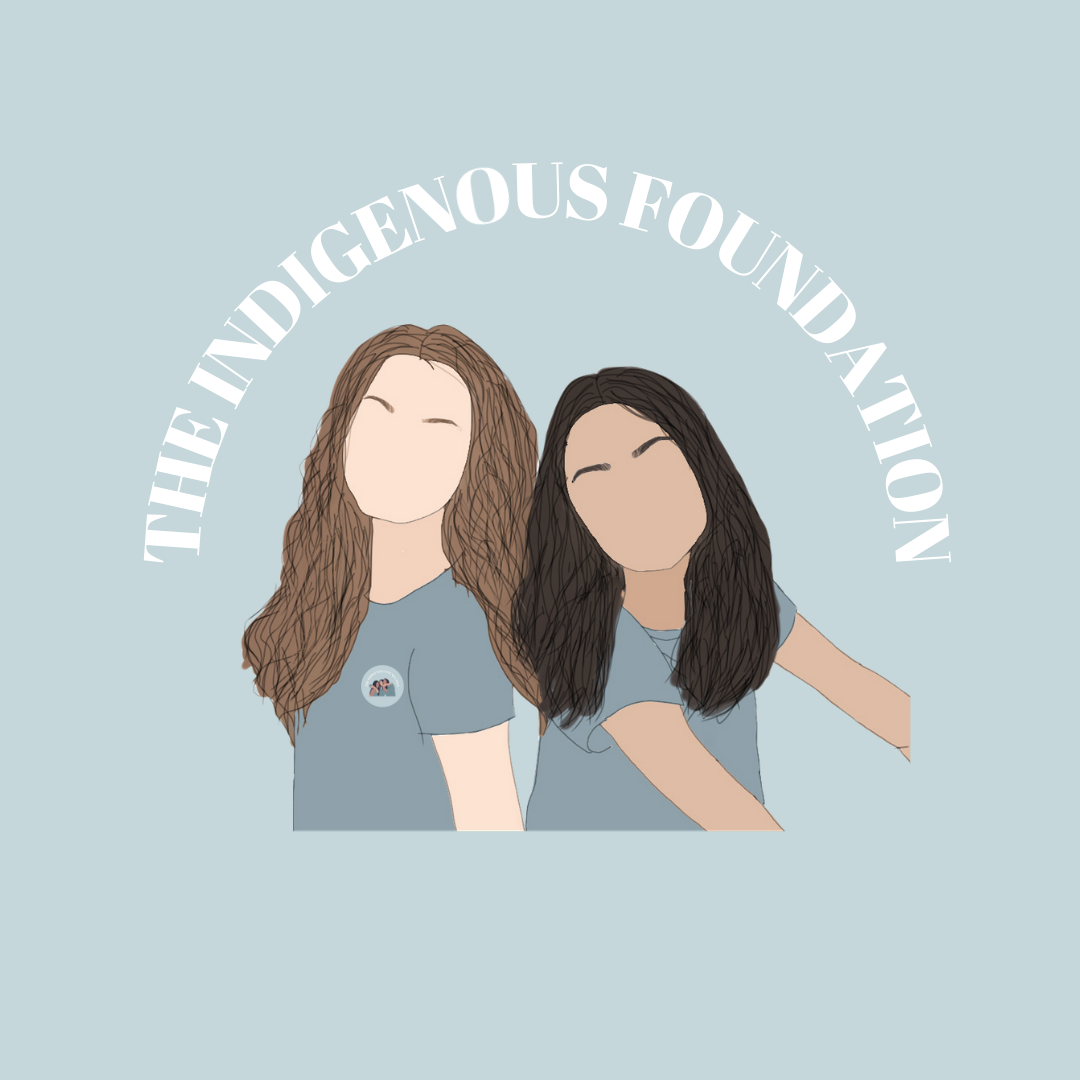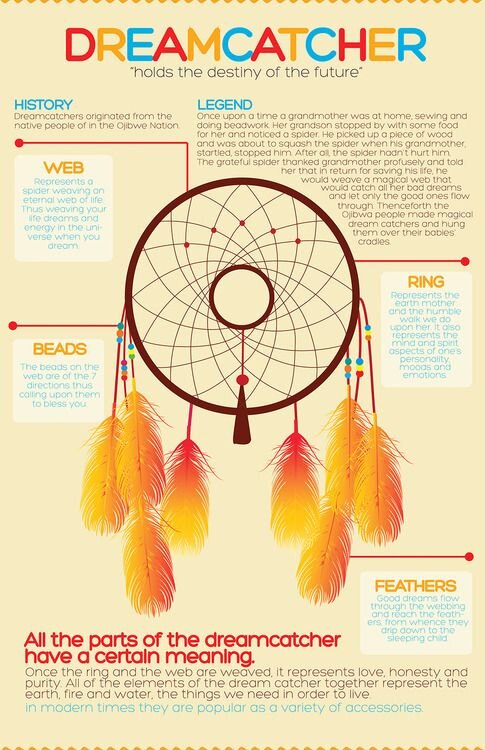Dreamcatchers are not your “aesthetic”
The Significance of Dream Catchers
Origins of Dream Catchers
Dreamcatchers are handmade willow hoops woven to a web or literally, a net. They can include feathers and beads, and they're traditionally suspended on cradles as a form of armor and protection.
Although the tradition began with the Ojibwes, dreamcatchers became widespread within the Native American communities in the 1960s and 1970s as a result of the Pan-Indian Movement.
They symbolize oneness and are indicative of Indigenous identity. Misuse and exploitation of the design is offensive to Indigenous people and dismissive of their value to them.
Story of Asibikaashi - The Spider Woman
Asibikaashi was the custodian of all Ojibwe infants and adults. As the Ojibwe started to geographically migrate across all of North America, the task became too large for Asibikaashi to fulfill on her own. Thus, women were placed in charge of weaving the webs alongside placing charms meant to protect the infant. The charms would capture any harm surrounding the infant at any time.
Source: Powwows.com
Alternate Ojibwe Legend
“A grandmother watched patiently each day as a spider spun his web above her sleeping place until one day her grandson noticed the spider and tried to kill it”.
“Don’t hurt him,” she told the boy in a soft tone, surprising him.
“But grandmother, you should not protect this spider.”
When the grandson left, the spider thanked the woman for her protection and offered her a gift. “I will spin you a web that hangs between you and the moon so that when you dream, it will snare the bad thoughts and keep them from you.”
At this, grandmother smiled and continued to watch the spider spin his web.”
Source: Native American Vault
Lakota Legend
“While receiving a spiritual vision high on a mountain, a Lakota leader met Iktomi, a trickster who also held great wisdom. Appearing to the leader in the form of a spider, Iktomi made a hoop of willow and spun a web inside of it.
He told the aged Lakota man that many forces, both bright and dark would attempt to enter peoples’ dreams and that the dream catcher he was making would catch the bright forces and allow the dark ones to slip away and burn up. Iktomi instructed the old man to make dream catchers for his people so they could all achieve a bright future by capturing the good dreams that are blown about by the winds of the night.
As you can see, in the Lakota version, dream catchers trap good dreams, just the opposite of the Ojibwe belief.”
Source: Native American Vault
Design & Meaning
They are small by design, some elements of a dreamcatcher include the hoop, the web and feathers. While beads, gem stones and arrowheads are more recent and modern additions to the design. The layering of the web leaves a small hole in the middle that allows good dreams to pass through while the web catches the bad dreams.
The Hoop - circle shaped or teardrop shaped, represents the circle of life.
The Web - patterned after a spider’s web, meant to catch bad dreams (or good in for Lakota)
Feathers - there are multiple interpretations, the most accepted is that the feather provides a soft ladder for the good dreams to follow to the dreamer’s mind
Beads - single bead represents the spider that wove the web, multiple beads represents the bad dreams that have been caught
Gemstones - replace the symbolism of feathers (where feathers are unobtainable due to laws and restrictions
Arrowheads - increased strength and protection. Arrows point to the four corners of the earth directed by the wind.
Presence of Dreams
In Ojibwe culture, dreams hold significance and offer insight into different purposes. For example, prophecies, names, spiritual strength and symbolism. Dreams are often associated with messages from spirits that inform one of their deeper self and guidance for the community. Sharing and interpreting dreams is an important facet for community building and informing one of the other, sharing their own experiences and perspective with others as a form of educating one another. Dreams often give insight into how the person has lived and how their parents have lived. One is part of the earth as the earth is part of the individual. In essence, dreams create familiarity with the unknown.
"We did not weave the web of life.
are merely a strand in it. Whatever
we do to the web, we do to ourselves"
--"Walk gently on Mother Earth" --
Appropriation and Commercialization
The appropriation of dreamcatchers is believed to have begun in the 1970s, where a watered down version of the purpose of the dreamcatchers was “they are hung to catch bad dreams.” There are mixed perspectives on the commercialization of dreamcatchers, where it is either condemned for misappropriating the spiritual significance of the dreamcatchers, to Idnigenous people taking advantage of the circumstance and partaking in the production and selling. In essence, when non-Native people make and sell dreamcatchers it is in fact cultural appropriation however, when Indigenous people choose to make and sell dreamcatchers as they always have, it is not.
Nevertheless, the appropriation of dreamcatchers exemplifies the dismissiveness of Native American culture and the borrowing of their spirituality to accommodate settlers. The dreamcatchers become a North American symbol of spirituality and holistic connection that is otherwise unobtainable by non-Native cultures. The act of creating the dreamcatcher is sacred and an important traditional facet for the Ojibwe and must be understood as such. While it is not forbidden to purchase a dreamcatcher, please make sure to support Indigenous businesses.
Sources
https://www.powwows.com/what-is-a-dream-catcher/
https://www.nativeamericanvault.com/pages/legend-of-the-dreamcatcher
http://www.native-languages.org/dreamcatchers.htm
https://tribalcollegejournal.org/stories-dreams-ceremonies-anishinaabe-ways-learning/
Indigenous Owned Business:
https://www.beadeddreams.ca/collections/dreamcatchers-medicine-wheels

